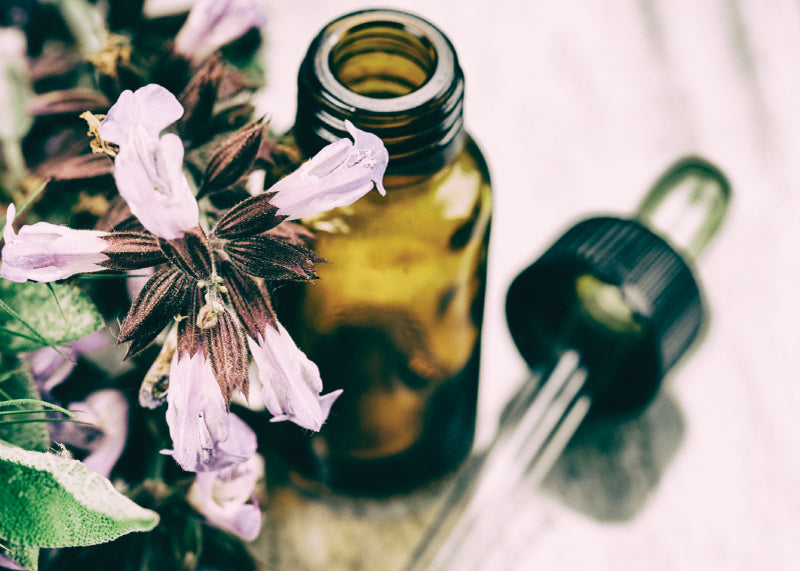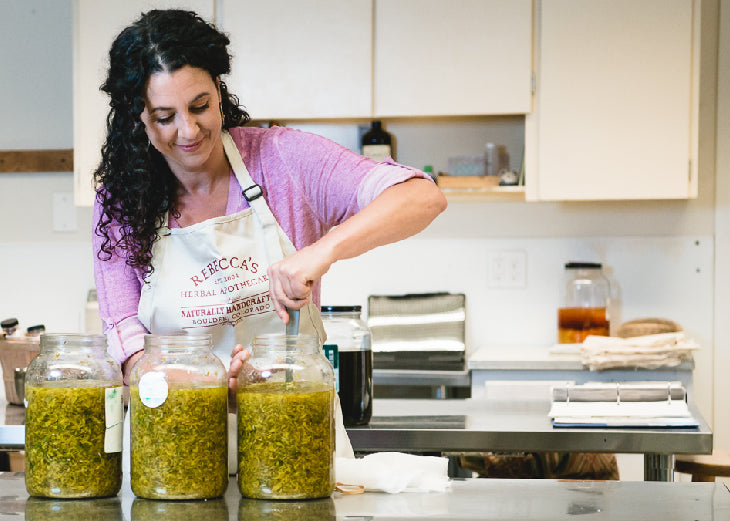Herb Article
Chaga Mushroom
By Amber Brisson, certified clinical herbalist & nutritionist
 Mushroom Name
Mushroom Name
Chaga Mushroom
Latin Name
Inonotus obliquus
Parts used
The entire mushroom is used in all preparations noted
Medicinal Properties
Mushrooms are fascinating. Neither plant nor animal, they reign in their own super kingdom called, Opisthokonta or the Fungi kingdom. They play an important part in the ecological cycle as decomposers which are essential in ecological nutrient cycling and exchange. Used as food and medicine, recent research has demonstrated their intriguing applications as decomposers of harmful chemicals and pesticides giving hope to new forms of bioremediation. Today we are exploring the intriguing world of a medicinal mushroom called Inonotus obliquus or Chaga mushroom.
Chaga is a medicinal polypore mushroom that grows off of birch trees and sometimes growing on Beech, Elm, Alder, and Hornbeam trees. The parasitic mushrooms appears as a crusty, blackened mass that looks almost like a burnt growth on the side of a tree. The Chaga grows under the outer tree bark until it erupts in a charcoal black extension of the tree. It takes 5-7 years for the polypore to reach maturity when it then falls off the tree onto the forest floor killing the tree host in the process. Throughout this time the Chaga is improving, concentrating and making within itself edible the rich tonic nutrients from the specific host tree.
Chaga has a long history of folk use in Russian, Baltic and Chinese medicine. It has been a part of Russian traditional medicine since the early 16th century. The local population used Chaga tea as an affordable coffee and tea replacement. The tonic and alterative effects of this mushroom kept this population healthy and strong through the cold winters. Like many medicinal mushrooms, Chaga is rich in beta glucans which have been shown to demonstrate immunomodulating properties.
There have been numerous clinical studies exploring the efficacy of Chaga mushroom extracts against certain types of cancers. Currently, there are no peer reviewed human clinical studies which prove the effectiveness of this mushroom against any cancers. However, many peer reviewed studies and laboratory tests have revealed ethanol-soluble antioxidants in Chaga. These antioxidants have been shown to lessen the damaging effects of free radicals in the body which can contribute to health issues such as inflammation and pre-mature aging.
Russian mushroom enthusiasts Sergiy and Katya Nokhrin explain that Chaga is most commonly used in Russia for cancer patients to help strengthen and speed healing post cancer treatments. In conjunction with modern treatments, this folk medicine has been used to lessen the side effects of radiation treatment. Recently, a pharmacognycist named Dr. Kirsti Kahlos at the University of Helsinki found triterpenes called inotodiol in Chaga. Kahlos and other researchers have found this specific constituent to be active against influenza and inflammation of the stomach and intestines.
With the constant flow of emerging clinical studies, I suspect Chaga mushroom will continue to reveal amazing medicinal applications. For more information on the world of medicinal mushrooms, please join us for a class on Medicinal Mushrooms, Wednesday, September 24th from 6:30-8:00pm.
Preparations & Applications
When using cut Chaga for an infusion or decoction, you can re-brew your Chaga material a second and third time for a longer time period without loss to flavor or potency.
Chaga Brews
1 heaping Tablespoon per cup of water. Place Chaga and water in a saucepan bring water to a rolling boil then turn heat down to low. Simmer for 15 min-2 hours (a crockpot on low is also great). Another option is to bring Chaga and water to a rolling boil and then turn off the heat and let the Chaga tea steep covered for 15 min-overnight. Chaga tea will keep in the fridge for 5-7 days. I like to freeze my Chaga brew in ice cube trays and add to other tea blends (Chai blends, Hot Cocoa, Elderberry) or throw the Chaga ice cubes into soups, stews and stir frys.
 Mushroom Name
Mushroom Name Chaga Mushroom
Latin Name
Inonotus obliquus
Parts used
The entire mushroom is used in all preparations noted
Medicinal Properties
Mushrooms are fascinating. Neither plant nor animal, they reign in their own super kingdom called, Opisthokonta or the Fungi kingdom. They play an important part in the ecological cycle as decomposers which are essential in ecological nutrient cycling and exchange. Used as food and medicine, recent research has demonstrated their intriguing applications as decomposers of harmful chemicals and pesticides giving hope to new forms of bioremediation. Today we are exploring the intriguing world of a medicinal mushroom called Inonotus obliquus or Chaga mushroom.
Chaga is a medicinal polypore mushroom that grows off of birch trees and sometimes growing on Beech, Elm, Alder, and Hornbeam trees. The parasitic mushrooms appears as a crusty, blackened mass that looks almost like a burnt growth on the side of a tree. The Chaga grows under the outer tree bark until it erupts in a charcoal black extension of the tree. It takes 5-7 years for the polypore to reach maturity when it then falls off the tree onto the forest floor killing the tree host in the process. Throughout this time the Chaga is improving, concentrating and making within itself edible the rich tonic nutrients from the specific host tree.
Chaga has a long history of folk use in Russian, Baltic and Chinese medicine. It has been a part of Russian traditional medicine since the early 16th century. The local population used Chaga tea as an affordable coffee and tea replacement. The tonic and alterative effects of this mushroom kept this population healthy and strong through the cold winters. Like many medicinal mushrooms, Chaga is rich in beta glucans which have been shown to demonstrate immunomodulating properties.
There have been numerous clinical studies exploring the efficacy of Chaga mushroom extracts against certain types of cancers. Currently, there are no peer reviewed human clinical studies which prove the effectiveness of this mushroom against any cancers. However, many peer reviewed studies and laboratory tests have revealed ethanol-soluble antioxidants in Chaga. These antioxidants have been shown to lessen the damaging effects of free radicals in the body which can contribute to health issues such as inflammation and pre-mature aging.
Russian mushroom enthusiasts Sergiy and Katya Nokhrin explain that Chaga is most commonly used in Russia for cancer patients to help strengthen and speed healing post cancer treatments. In conjunction with modern treatments, this folk medicine has been used to lessen the side effects of radiation treatment. Recently, a pharmacognycist named Dr. Kirsti Kahlos at the University of Helsinki found triterpenes called inotodiol in Chaga. Kahlos and other researchers have found this specific constituent to be active against influenza and inflammation of the stomach and intestines.
With the constant flow of emerging clinical studies, I suspect Chaga mushroom will continue to reveal amazing medicinal applications. For more information on the world of medicinal mushrooms, please join us for a class on Medicinal Mushrooms, Wednesday, September 24th from 6:30-8:00pm.
Preparations & Applications
When using cut Chaga for an infusion or decoction, you can re-brew your Chaga material a second and third time for a longer time period without loss to flavor or potency.
Chaga Brews
1 heaping Tablespoon per cup of water. Place Chaga and water in a saucepan bring water to a rolling boil then turn heat down to low. Simmer for 15 min-2 hours (a crockpot on low is also great). Another option is to bring Chaga and water to a rolling boil and then turn off the heat and let the Chaga tea steep covered for 15 min-overnight. Chaga tea will keep in the fridge for 5-7 days. I like to freeze my Chaga brew in ice cube trays and add to other tea blends (Chai blends, Hot Cocoa, Elderberry) or throw the Chaga ice cubes into soups, stews and stir frys.




